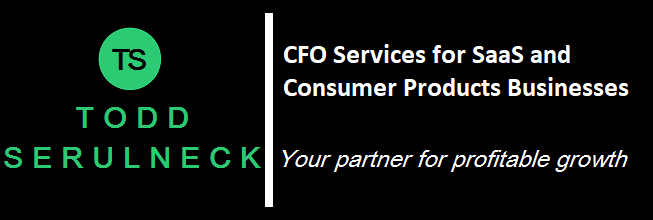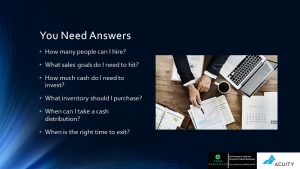Software-as-a-Service Startups: Positioning for Growth

Many Software-as-a-Service (SaaS) startups seem to follow similar growth phases that take a year or two to complete.
You begin determining the value of your product and business services by defining the product, pricing, the targeted consumer, and financing. Aside from your own financial contributions, you are going to need a chunk of capital to get off the ground. As a SaaS entrepreneur, you lack hard assets needed for proof of value for investors and consumers.
Developing proof of value requires identifying the correct consumer characteristics and building a sales team to sell the product to the right market. This establishes an early foundation to support growth, eventual expansion, and future sale.
Defining the Customer
Quick traction is needed to gain funding. This means learning about customer goals and actions in order to align your product with them. You probably have very little information to go on aside from demographics or early buying behavior. Your customer’s motivation is going to be key and requires talking to customers regularly then linking results to information regarding marketing segments, customer profiles, buyer behaviors, and industries. Narrow down your customer type and determine positive motivations to buy. Track and measure this data to estimate growth for investors.
Sales, Marketing, and Advertising
Align your customer data with sales, marketing, and advertising initiatives. Developing these areas of the business can be extremely overwhelming, but necessary. SaaS is a recurring revenue model with complex accounting, sales compensation structures, and funding requirements. Marketing efforts alone are challenging when effectively combining traditional methods, online advertising, and mobile friendly content. Once you’ve found the characteristics of your ideal client, focus on market penetration and not the size of the market. You will need growth before ever reaching the expansion phase because it comes with new product development. For now, answer key questions: Who needs it, why do they need it, and what is in it for them?
Product Description
Develop your product message using customer, sales, marketing, and advertising data and make it consistent across all media avenues: website, sales pitches, email, direct mail, event presentations, press releases, blogs, and webinars. You will share your prior data and this detailed description with a venture capitalist or angels to fund start-up processes and necessary talent in the form of a business plan.
Know your product category:
- A commodity is a generic product that customers already know about and use. There is a current category and you are improving on it in some way or developing a new purpose.
- A contraption is innovative, complex, and needs explanation or clarification in its use. You will be creating product definitions that are simple and focusing on getting clients to try it to understand how it works.
SaaS has the advantage of being essential business tools that customers take seriously. If your product is a contraption, get your message down to few words to entice interest. You will lead with a free trial to demonstrate product value in a real-world experience and consumers will begin to educate themselves.
Pricing
Learning SaaS pricing is difficult for two big reasons:
- You won’t initially have the data volume to help you
- Pricing is recurring at renewal
Create bundles based on your customers and their growing list of needs as businesses evolve over time. New contract value is hard to gauge since customers can cancel early or be loyal for years. Pricing should encourage the customer to renew and add services as they need them. The goal is retention and building value over time. Prove potential growth using metrics and testing price points. Use this data to achieve funding to get the business to its estimated point of future value.
Resources and Links
The SaaS Adventure

“What does it take to build a billion-dollar SaaS enterprise-software company?” I hear this question a lot in my work as a tech investor, and it’s..
Source: Agrawal, N., 2015. techcrunch.com/2015/02/01/the-saas-travel-adventure/
Funding options for your SaaS startup: The pros and cons of the most popular funding methods – SaaScribe

Funding your SaaS startup is something all of us are thinking about and it feels particularly difficult when you’re starting out with your first business. Once you’ve validated your idea you’ll need to have a funding path because without one you can’t realistically plan for the future and support the growth of your business.
Source: Chaplin, H. saascribe.com/funding-options-for-your-saas-startup-the-pros-and-cons-of-the-most-popular-funding-methods/
The 3 Phases of SaaS Growth at SaaStr Annual 2016

Every SaaS company goes through three main stages of growth on the journey to $100 million in ARR. Learn how SaaStr Anuual 2016 can help you get there.
Source: Hogan, C., 2016. www.insightsquared.com/2016/01/the-3-phases-of-saas-growth-at-saatr-annual-2016/
SaaS Marketing Strategy Achieving SaaS Customer Alignment

SaaS customer acquisition should focus on maximizing available market penetration, not increasing available market size, and to do that you have to have a very clear picture of your target SaaS customers.
Source: York, J. 2015. chaotic-flow.com/media/saas-marketing-strategy-saas-customer-alignment.pdf

 Next Post
Next Post




